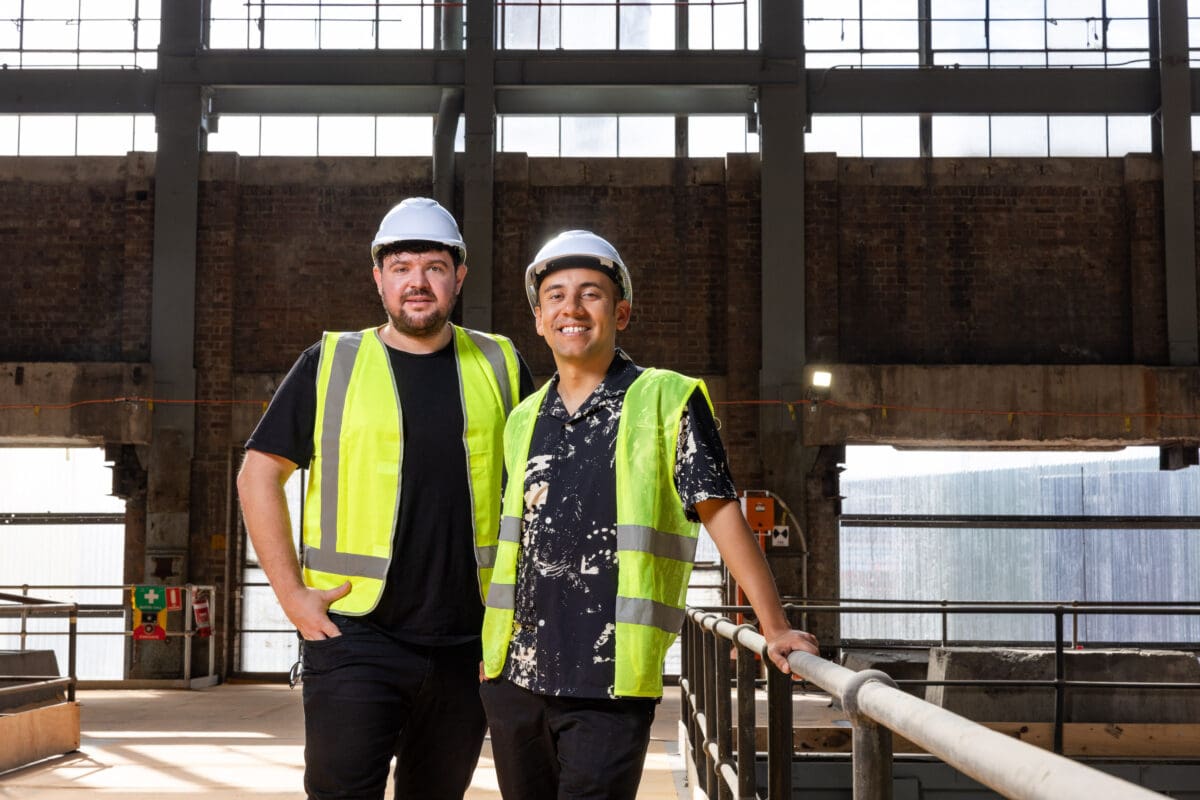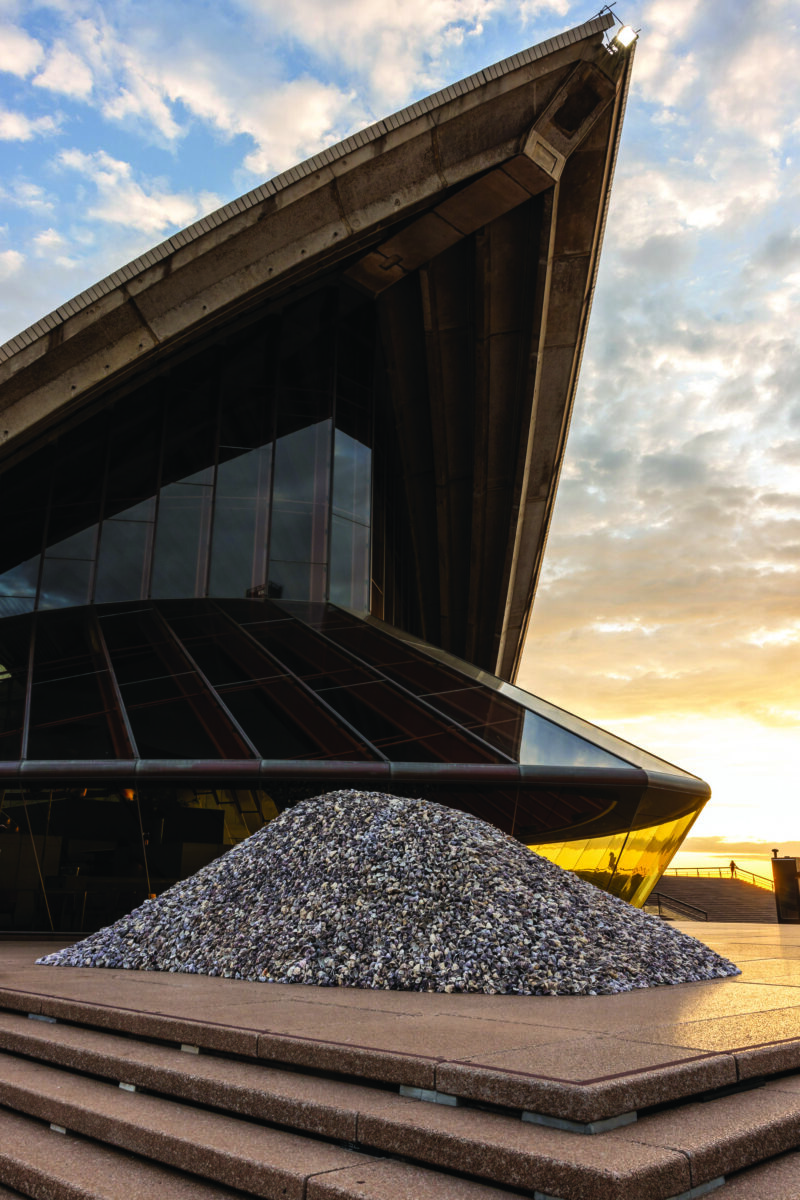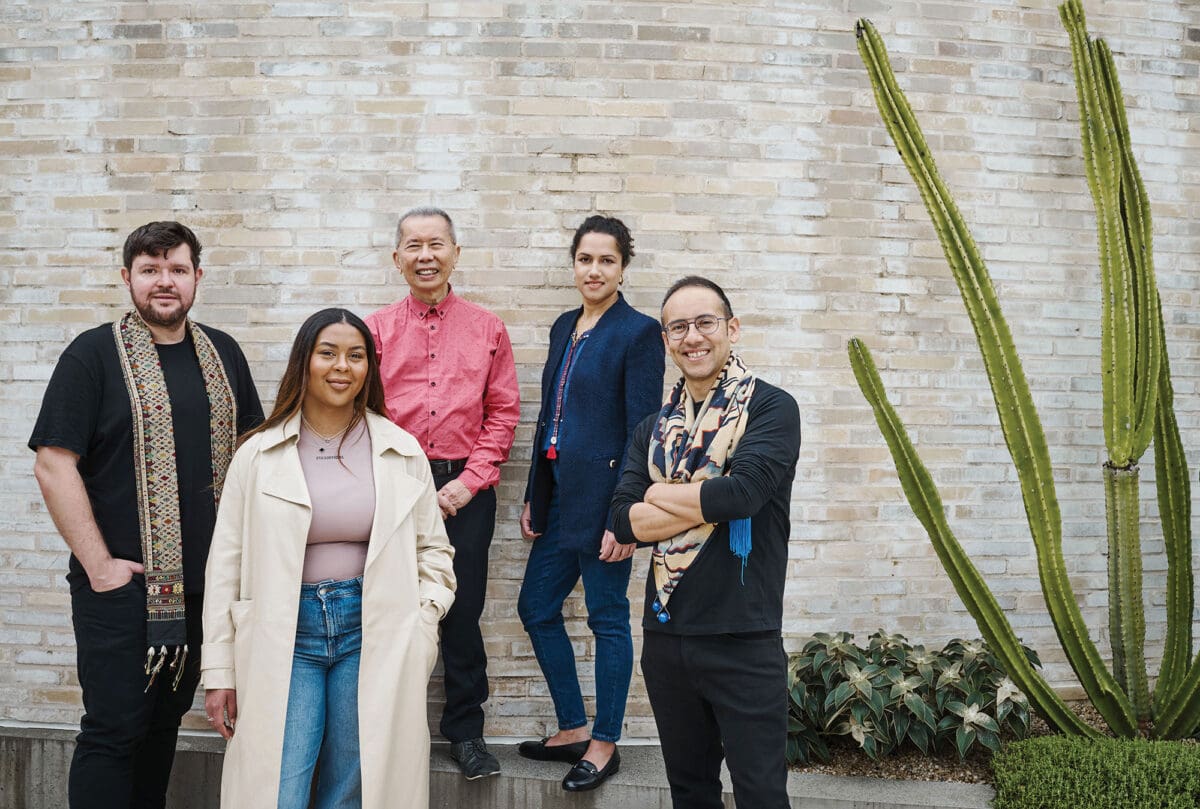
Making Space at the Table
NAP Contemporary’s group show, The Elephant Table, platforms six artists and voices—creating chaos, connection and conversation.



Under the co-direction of long-time collaborators Cosmin Costinaș and Inti Guerrero, the 24th Biennale of Sydney focuses on the theme of Ten Thousand Suns, pulling in perspectives from around the world to decentre the Western experience and provide a new lens through which to see and deal with the ecological crisis. With new exhibiting venues, it will also, for the first time, expand its scope to include a music program.
Giselle Au-Nhien Nguyen: What is the significance of the theme Ten Thousand Suns?
Inti Guerrero: It’s a call for the celebration of the multiplicity of perspectives, and the gathering of different viewpoints. We like to recall the Chinese mythology of Hou Yi, the great archer, who took down nine of the 10 suns that existed in antiquity and that’s how we ended up with one of them. We’re not waiting for a single hero to take down those nine suns, but there are solutions in things like community and learning from different contexts to shift the psyche around our apocalyptic time.
It’s also learning from other moments and communities that have had apocalyptic moments in history, whether it’s during the AIDS epidemic—the queer community did indeed live through an apocalyptic time—and how First Nations across the world lived through different times. Their mere presence is resistance to different layers of historical violence.
GAN: What is the importance of, as your Biennale statement says, “challenging Western fatalistic constructions of the apocalypse”?
Cosmin Costinaș: There is a direct continuity between the enactment of the conditions that led to the current climate crisis through colonialism, different forms of exploitation and repression of knowledges of dealing with the climate, and a particular modus of approaching the imagination of the future—one that continues to disregard Indigenous and non-Western knowledges and principles. It’s also about acknowledging the particular synchronicity between a moment when a certain degree of decolonisation, and a certain affirmation of multiplicities, has been achieved. There’s a presence of voices, ideas and individuals who have been colonised. In this discourse of the end of the world, different understandings of the world are brought back into the conversation, when a new vision of the world might indeed be possible.
GAN: How do you balance wishing to acknowledge the worldwide ecological crisis and destruction with a refusal to concede to fatalism?
CC: None of the propositions in the Biennale are meant to mitigate, delay or minimise any of the efforts to deal with the climate crisis—these are some of the most urgent political issues of our time. It’s about how they’re framed—apocalyptic thinking does not facilitate solutions for the climate crisis. It’s about creating the proper premises to deal with it.
This is also part of the experience of Indigenous and colonised people around the world whose worlds have been fundamentally altered by the colonial experience. They will never be the same as they were prior to colonisation—nevertheless, so many of these worlds are resilient, present, alive. So, there is a model from which we’re learning about celebrating life and resilience in a changed mode, in an altered state. This is the collective experience of the 21st century.
IG: Part of the exhibition is taking place at White Bay Power Station, which is a relic of the carbon era, Commonwealth history and colonial memory. Being inside a power station that was involved in the burning of coal creates the gesture that we are in the remains of the era that led us to our current crisis.
GAN: This is the first year the Biennale will include a music program. How will it work together with the visual arts exhibitions?
CC: Expressions can be forms of resistance, and music is part of that. We really wanted to put forward the experience of music within the program. We’ve partnered with Phoenix Central Park, who have been leading an important community network of contemporary music. It will be presented by different performers that have, in their lyrics or in their diasporic biographies, a relationship to many of the discussions that we are having.
Sometimes music is part of the artwork—for example, in the work of Satch Hoyt, a Jamaican- British artist, who has a long-term project called Afro-Sonic Mapping. He has created an artwork of large canvases that are primarily scores of music, and their visual composition is meant to mirror the passage of Black people from West Africa to the Americas. GAN This is not your first time working together as co-curators/directors. What approach have you brought to the Biennale? IG We’ve been working together for more than a decade, both in terms of realising exhibitions together and publications, seminars and conferences, while also maintaining separate practices. We started working together quite organically from dialogues on specific topics that we’re both interested in. That has been a motif that remains at the core of how we work together in the Biennale.
We’re both quite involved in everything rather than dividing the decisions or aspects of the curatorial work and practice. We believe that both ethically and politically, we should really move away from the model of the single messianic individual, particularly of the curator who is a larger-than-life figure—the creator and author of imagining worlds. Working together with each other, but also applying this model to collaboration with other colleagues and the team that realises the Biennale, and the way we work with artists, is really at the core of what we stand for.
CC: Something that we shared in different projects in the past, when working with geographies that are not necessarily our places of origin, is that we try to unpack history together with people that have done extensive research. For the Biennale, we’ve been excited about many moments as we go through the process of making the exhibition and doing the research. It becomes a very rewarding Pandora’s box of trying to connect different makers. Every time we have the chance to learn from a context, we try to navigate through these different histories, and we hope that people will connect with them.
24th Biennale of Sydney: Ten Thousand Suns
Art Gallery of New South Wales, Artspace, Sydney Opera House, Museum of Contemporary Art, Chau Chak Wing Museum, UNSW Galleries and White Bay Power Station
9 March—10 June
This article was originally published in the March/April 2024 print edition of Art Guide Australia.